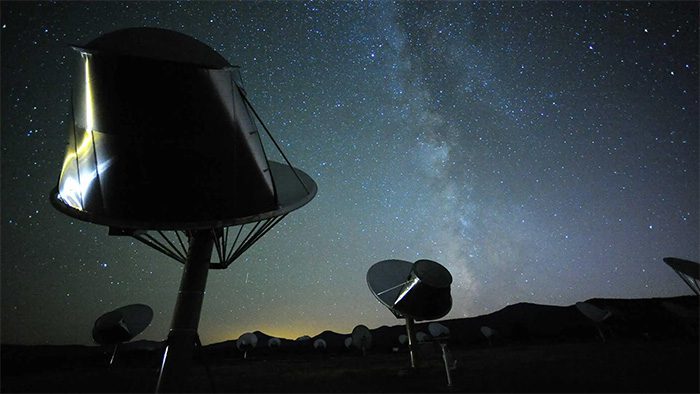Unprecedented Flickering: 35 New Radio Signals Leave Scientists Perplexed.
These are 35 fast radio bursts (FRBs), monitored by the Allen Telescope Array (ATA) of the SETI Institute (Search for Extraterrestrial Intelligence – USA).
Fast radio bursts have been detected by many observatories around the world. However, the 35 signals monitored by ATA are entirely unique.
They are all a type of very rare repeating signal. Moreover, these signals flicker in an incomprehensible and eccentric manner.

“Warrior” Searching for Aliens ATA – (Photo: SETI INSTITUTE).
One of the most peculiar signal sources analyzed is FRB 20220912A. By monitoring this source for over 541 hours, scientists noticed its radiation bursts span a wide frequency range within the radio wave spectrum.
From this, an intriguing and previously unseen model of fast radio bursts has emerged. According to Live Science, the authors state that new data could help clarify the origins of these signals in deep space, especially those that repeat.
Numerous hypotheses about fast radio bursts have been proposed, including neutron star mergers, black holes, and even signals from extraterrestrial civilizations.
Scientists tend to lean towards the hypothesis that these signals originate from neutron stars or black holes. However, if they are of natural origin, the repeated signals; especially those that recur rhythmically, as collected by the SETI Institute, become quite implausible.
“We are narrowing down the FRB sources to extreme objects like magnetars, but no model has yet explained all the observed characteristics,” said Dr. Sofia Sheikh from the SETI Institute.
Neutron stars are essentially “zombie” objects, remnants of a massive star that has exploded once. Meanwhile, magnetars are a particularly powerful type of neutron star, with magnetic fields 1,000 times that of a typical neutron star and about 4 million times stronger than Earth’s.
As the collected data does not completely align with the model of neutron stars, scientists remain hopeful of finding something else as the “culprit” that emits these fast radio bursts.
Additionally, this research demonstrates the power of the ATA, a telescope specifically designed to search for the faintest and most distant radio signals from extraterrestrial life.


















































